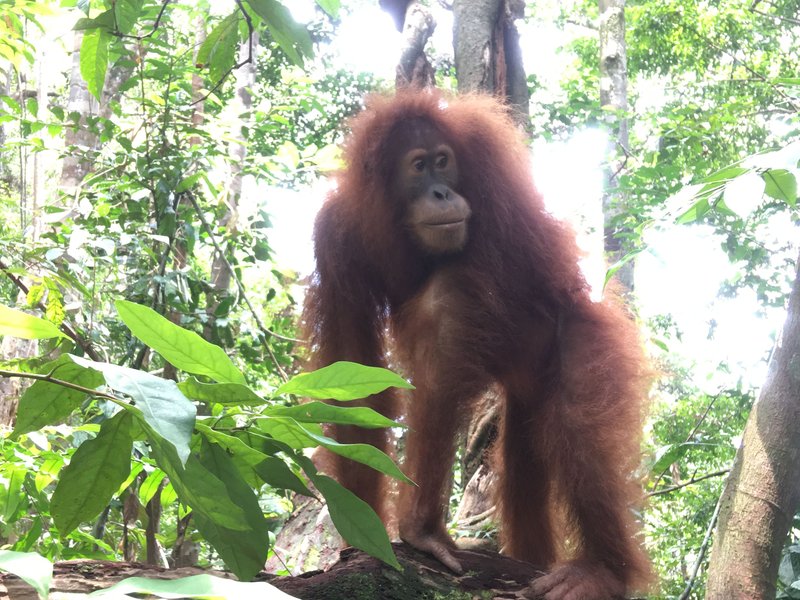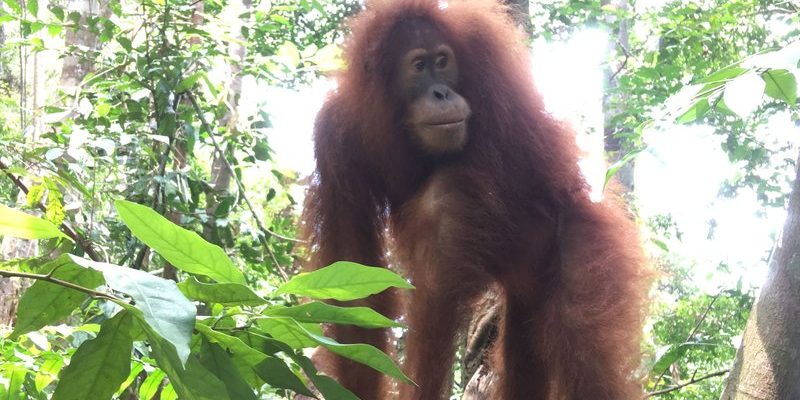
Now, let’s picture this scenario: you’re on an adventure in the lush, vibrant jungles of Sumatra, feeling the pulse of the wild around you. Suddenly, you spot an orangutan perched on a branch, its big, soulful eyes peering down at you. It’s not every day you get this close to such an extraordinary animal! However, seeing a Sumatran orangutan comes with its own set of responsibilities. Understanding how to act in that moment can greatly affect both your experience and the well-being of the orangutan. Here’s what you need to keep in mind.
Stay Calm and Assess the Situation
First things first—when you encounter a Sumatran orangutan, the best advice is to stay calm. These creatures can sense your energy, and if they feel threatened, they might react unpredictably. Take a deep breath and pause for a moment. Observe the situation around you. Is the orangutan alone, or are there others nearby? Are they eating or resting?
Here’s the thing: orangutans are generally non-aggressive creatures. They prefer to keep to themselves, much like introverts at a party! However, if they perceive you as a threat, that’s a different story. So, it’s crucial to keep your distance—ideally around 50 feet. This boundary helps ensure both your safety and that of the orangutan. Remember, they are wild animals, and maintaining a respectful distance is key.
Keep Your Voice Low and Body Language Relaxed
When you spot that orangutan in the trees, it might be tempting to shout in excitement or rush for a closer look. Don’t do it! Instead, speak softly if you need to communicate with others in your group. Loud noises can startle orangutans and make them feel unsafe.
Also, be mindful of your body language. Avoid sudden movements or aggressive gestures, as these could be perceived as a threat. Picture yourself in a calm yoga class; relaxed, slow movements can help convey that you mean no harm. That way, the orangutan might just go about its business, allowing you a glimpse into its world without any disruption.
Don’t Attempt to Touch or Feed the Orangutan
It might seem harmless to want to reach out and touch this fascinating creature or offer it some food. Honestly, though, this is not a good idea, and it can have serious consequences for both you and the orangutan. Wild animals have their own diets and ways of living, and throwing food their way can lead to problems. For one, it disrupts their natural foraging habits and may encourage them to approach humans more than they should, which is dangerous for them in the long run.
Plus, wild orangutans can carry diseases that might be transmitted to humans. So, it’s best to admire them from a distance and let them enjoy their natural food sources—fruits, leaves, and nuts, oh my! If you really want to contribute positively, consider supporting conservation efforts instead.
Observe and Document from a Safe Distance
If you find yourself lucky enough to see a Sumatran orangutan, take a moment to soak it all in. Watch how they swing from branch to branch or how they delicately peel a fruit. You might be wondering why this is important. Well, observing how they behave in their natural habitat can be a remarkable learning experience.
Bring a camera if you can, but remember to keep your distance while snapping photos. A zoom lens can help capture those magical moments without compromising safety. Consider journaling your experience too. Writing down what you see can provide a wonderful way to reflect on the encounter and contribute to your understanding of wildlife. Your notes might even spark ideas for how you can get involved with Sumatran orangutan conservation efforts!
Know When to Back Off
Sometimes, despite your best efforts, the orangutan may feel uncomfortable with your presence. If it starts to show signs of agitation—like vocalizing, making sudden movements, or attempting to flee—it’s time to back off. Respecting their space is crucial for both your safety and theirs.
Look for cues like the orangutan retreating to higher branches—it might be trying to put more distance between you two. Just as you’d step back if a friend seemed upset, give the orangutan the space it needs. Remember, you’re a guest in their home, and it’s vital to treat it with respect.
Contact Local Authorities for Assistance
If you encounter an orangutan that appears to be injured or in distress, it’s essential to reach out for help. Do not attempt to approach or handle the animal yourself. Instead, contact local wildlife authorities or conservation groups that specialize in orangutan rescue efforts.
They have the training and experience needed to intervene safely. Plus, they can provide much-needed care to the animal. Knowing how to report an incident not only helps the orangutan but also ensures that you are acting responsibly during your encounter.
Reflect on Your Experience and Share Your Knowledge
After your adventure, take a moment to reflect on what you’ve learned. What did the encounter teach you about wildlife and conservation? Sharing your story with friends, family, or even on social media can raise awareness about the importance of protecting Sumatran orangutans and their habitat.
Talk about your journey, and don’t forget to mention how crucial it is to respect wildlife. You never know who might be inspired to learn more or take action in support of orangutan conservation. Plus, your story could encourage others to approach wildlife encounters with the same mindset—of awe and respect.
In conclusion, encountering a Sumatran orangutan in the wild can be an unforgettable experience, filled with wonder and learning. By remaining calm, keeping your distance, and respecting these magnificent creatures, you contribute to their safety and the preservation of their habitat. Let’s protect and celebrate these incredible beings together!

